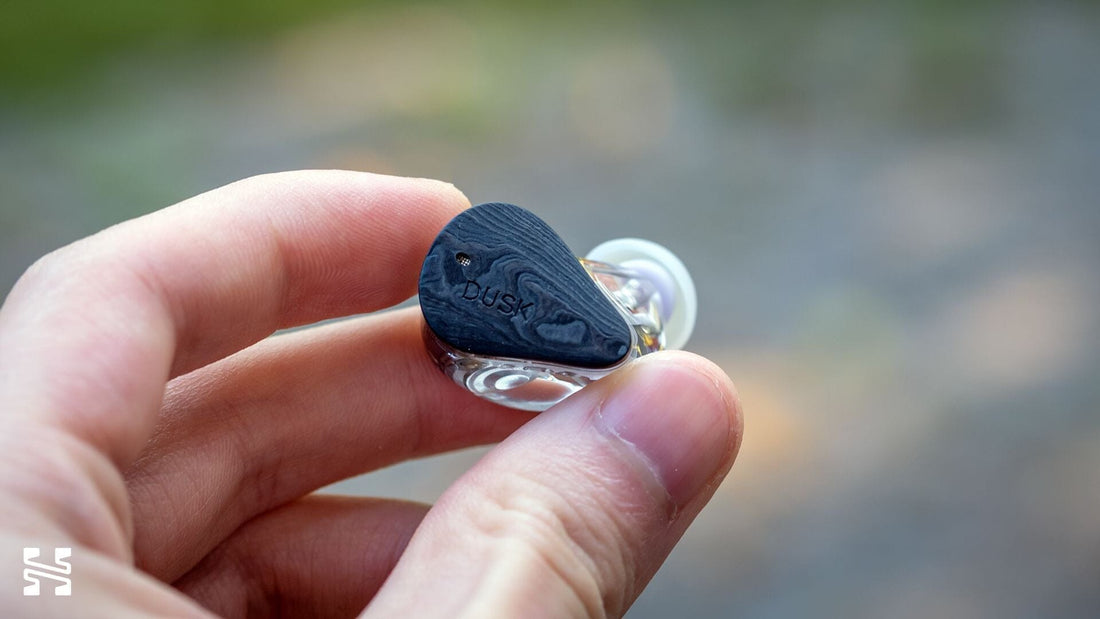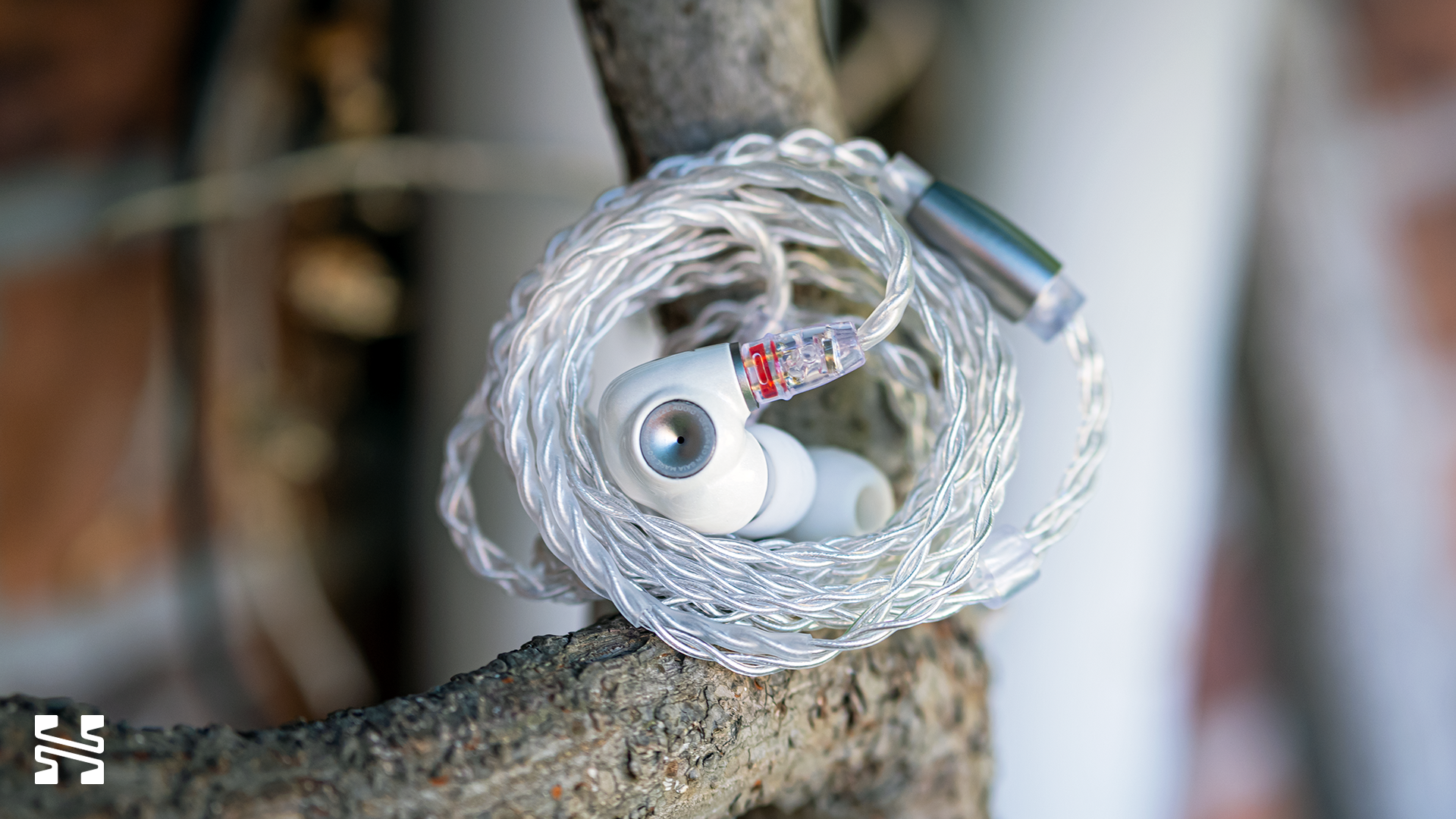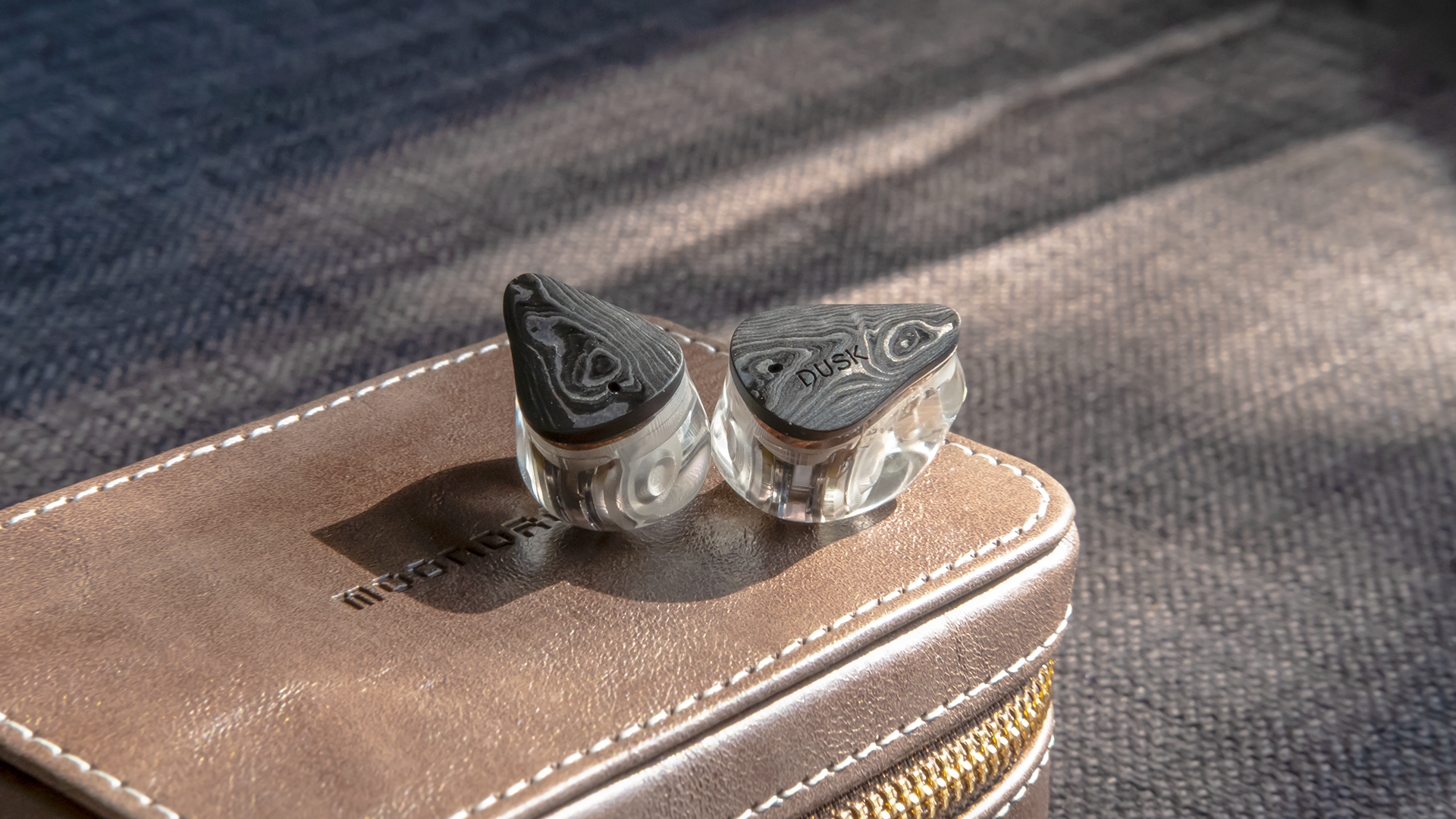The Best IEMs Under $500 - Start of 2026 Edition
Looking for the best IEMs under $500? The Headphones.com reviewer team has you covered with our favorite picks, with some context on the state of the IEM market.

Introduction
If you’re reading this buyer’s guide, you probably fall into one of two camps. Either you’re looking for your next upgrade from the sub-$100 range, or you have a healthy wallet and are willing to pay a bit of a premium to start your audio journey. Wherever you’re coming from, this buyer’s guide will cover the notable in-ear monitors (IEMs) from $100 - $500 and explain why they’re worth talking about.
This guide was written by Fc-Construct with input from the rest of the Headphones.com reviewer team. The team does not receive any form of compensation from any of these recommendations. Current prices may differ from listed due to shifting market conditions.
Before We Start
While most people reading this are likely to have some experience with IEMs already, I don't want to take it for granted that everyone knows (or remembers) some of the basics. So here are two important things I want you to keep in mind while reading the rest of this buyer’s guide.
Tuning, Technicalities, and Graphs
You might notice throughout this article that there are references to both tuning and technicalities. When it comes to headphones and IEMs, tuning is king. Tuning can be best thought of generally as the “sound profile” of an audio product, and every headphone or IEM has a frequency response that describes a measurement of its sound profile. This isn’t the article to delve into specifics but suffice it to say that without a favorable tuning, it becomes hard to recommend a product. IEM manufacturers have gotten extremely good at tuning IEMs in recent years, and this buyer’s guide showcases some of the best examples at the $100 - $500 range.
However, tuning isn’t everything when it comes to sound quality - there are also its perceived technical abilities: subjective descriptions of the listening experience. For example, soundstage, imaging, and resolution are common terms used to characterize performance. While price is not correlated with sound quality (there’s a lot of bad products out there!), for the items listed in this article and other buyer guides at different price points, you can think of them as a general step up in technical ability in each segment.
For the IEMs on this list, we’ll also include a frequency response graph for it. These are a visualization of its tuning - an objective way of looking at how the product might sound like. It’s from graphs that you get descriptions of tonal profiles like “flat” or “V-shaped”. Learning to read a graph properly is an involved process beyond the scope of this article, so I’ll link a few resources in the Appendix for you.

Diminishing Returns and Realistic Expectations
The inherent nature of buyer’s guides and product reviews is the tendency towards trying to find the maximum price-to-performance ratio and crown a definitive “best”. Unfortunately, it’s not that easy. Audio is a highly personal hobby, and what’s the best for someone might not be the best for you. Or put another way, there are many things in a product that a person may value differently - but the only common denominator is the price tag.
As such, diminishing returns come hard and fast here. A $500 IEM on this list might be better than a $100 one, but it won’t be 5x better. It might not even be 2x better. While I'd say diminishing returns really kick in around $300, it's ultimately up to you to decide how much you're willing to pay for increasingly marginal improvements. Admittedly, it can be frustrating when there are very limited options to try something before you buy, but that’s unfortunately part of the reality of this hobby.
I say this not to discourage you from the fun of researching and enjoying new IEMs, but rather to implore you to think carefully if you really need that next upgrade. I’ve just seen way too many people become disillusioned when faced with the reality of diminishing returns.
With these considerations in mind, let's dive into the recommendations!

The “New Meta” Tuning
If you’ve spent any time looking at IEM reviews in the past year or so, you’re almost certain to have come across an archetype of IEMs called “New Meta”. These are IEMs that follow a tuning fundamentally different from the Harman-like IEMs that dominated the hobby in previous years. It’s an acoustic philosophy borne out of an updated understanding of measurements as a result of moving to the B&K 5128 measurement system. I wrote an in-depth buyer’s guide on this topic here.
Long story short, “New Meta” describes a market trend towards a tuning featuring a population average anatomical baseline (DF HRTF) with a 10 dB downwards tilt. This means that for the average person, this style of tuning is likely to be considered balanced. While “New Meta” might be understood as a target curve, for all intents and purposes, this is a tuning philosophy rather than a One True Curve.

CrinEar Daybreak - $179
If you’re looking for a one-and-done, the CrinEar Daybreak is at the top of the list. It competes arguably for the price-to-performance crown in this hobby in offering a well-balanced, practical tuning that satisfies the majority of hobbyists. There’s a healthy bass shelf for depth and rumble, a clean midrange that leans neither warm nor cool, and a touch of treble that toes the line of brilliance. In a way, the Daybreak embodies the final outcome of the seismic shifts that the IEM space has faced over the past 3 years as we gained new insights into frequency response graphs and what makes something neutral. It’s the first IEM I introduce to those new to the hobby to show off what’s possible in these tiny devices.
To be clear, it is far from the only IEM that offers this sort of “New Meta” tuning. And other renditions may present better perceived technical ability. But the Daybreak is a near ideal starting point featuring the lowest price tag. You’d be hard pressed to find better value in all of audio, and because of that, many of the previously released recommended “New Meta” IEMs in this list have effectively been made obsolete.
Read Listener's CrinEar Daybreak review | Watch Resolve’s CrinEar Daybreak review
CrinEar Daybreak In-Ear Headphones

MoonDrop x Crinacle DUSK (DSP Preset) - $360
Of all the “New Meta” IEMs that the Daybreak replaced, the DUSK is one of the few that I’d say is still worth trying. While it still presents that neutral, balanced “New Meta” tuning, it’s one with an ever-so-slightly richer midrange. But it’s in the DUSK’s technical presentation where this IEM shines. Bass notes are shockingly tight yet effortlessly delivers a deep rumble. Resolution is easily on par with anything under $1,000 and arguably beyond.
However, it’s not without its caveats. It is a bright sounding IEM with a bit of brittleness in the treble. And the biggest knock of all: you need to use the DSP preset (or EQ) to achieve this sound. For most, it won’t be a dealbreaker. But it is an annoyance to keep in mind.
Read Fc-Construct’s “New Meta” round-up review

Softears Volume S - $320
Hailed by some as one of the best IEMs of 2024, the Softears Volume S is a rather interesting IEM with an almost “New Meta” tuning. Its midrange doesn’t adhere quite as closely to the “New Meta” standards, but its treble is one of the closer renditions currently available. While there is a minor upper treble peak, it’s a footnote in an otherwise very well-controlled treble response. The bass of the Volume S has a punchy, articulate sound characteristic of its BA drivers. This bass is a modest elevation, with more energy in the midbass rather than subbass depth. Arguably however, this does lead to some blooming at the lower mids transition.
The Volume S stands out by not standing out. It simply delivers a tastefully tuned, midrange focused experience with little to distract you in the bass and treble. For those with little experience with IEMs and want to play it safe, there aren’t many options that play it safer. Just pay attention to its two tuning modes if you do get it.
Read Listener’s Volume S Review | Watch Resolve’s Volume S Impressions

The “Old Meta” Tuning
While the New Meta is the current hotness, not everyone might agree with its direction. After all, plenty of older IEMs have brought hours of enjoyment to various listeners. In that spirit, we’d like to highlight a few IEM that embody some of that history.
Truthear Nova and the Harmans ~ $100 - $250
The Truthear Nova is a primary showcase of the race-to-the-bottom theme that continues to grip the IEM market. The Nova effectively offers the same Harman-tuning of the formerly beloved $520 MoonDrop Variations at only $150. Of course, they don’t sound identical. Some would call the Nova a “baby Variations”. But price isn’t correlated with quality and in some cases, you might even prefer the Nova’s technical presentation. For those who enjoy the Harman-style IEM tuning, the Nova might just be the perfect stopping point.
But it’s not just the Nova. There’s a plethora of Harman-like IEMs such as the Simgot EM6L, Binary Acoustics x Gizaudio Chopin, and Kiwi Ears Quintet to choose from. They all provide a flavour to that (in)famous Harman in-ear target. The Nova is the closest rendition but for those wanting a bit more midbass presence, be sure to explore reviews of these other options.
Read Listener’s Truthear Nova review | Watch Resolve’s Truthear Nova review

MoonDrop Blessing 3 - $360
After the runaway success of its Blessing line-up, MoonDrop released the Blessing 3 as a direct successor to the Blessing 2 at the same price. It undoubtedly improves upon the Blessing 2 or B2:Dusk in its technical performance, particularly in having a notably tighter bass response and extended treble response. However, it does so at the cost of the B2:Dusk’s superb tonality, with the Blessing 3 taking on a thinner, more strident sound. Though not quite Harman, the Blessing 3 is the poster child for a hypercharged, energetic IEM. Fun fact: there exists a Japan-only Blessing 3 Aqua that comes in a gorgeous shade of blue.
Read Precogvision’s Blessing 3 review | Watch Goldensound’s Blessing 3 review

The Planar Revolution
7Hz Timeless and the Old Planars ~$100 - 250
In 2021, the 7Hz Timeless ushered in the planar IEM revolution. The Timeless was the world's first competent planar IEM that clocked in at a highly competitive price of $220. With a generally pleasant tonality unique from Harman and excellent technical performance marked by great clarity, it's little wonder that the Timeless made a name for itself in the IEM market. Soon after, a rush of me-too products followed suit. You can see Resolve’s round-up review here comparing a number of the most popular models.
Because they all share a similar ~14.8 mm planar driver, they all generally sound similar to one another. The main difference comes in the form of a few tweaks to the quantity of bass, mids, and treble rather than changing the planar driver’s signature sound. There’s quite a wide variety of options and prices so it should be easy to find one that fits your tastes and budget. Almost any one you pick will be a fair choice.
Just note that the treble of these planars are where they most differ from one another so be sure to exercise a bit of due diligence in case one model might be a little too intense. For example, the Letshuoer S12 is extremely popular but has quite a bit of bite in the mid-treble. The Tin HiFi P1 Max on the other hand is a warmer, more subdued choice.
Read Fc-Construct’s 7Hz Timeless review | Read Precogvision’s 7Hz Timeless review

Image credit to The Hangout's Instagram.
7Hz x Crinacle Divine and Diablo - $150
While that ~14.8 mm planar driver provided a great sound quality floor, it also limited its ceiling. There was little one could do to meaningfully transform the planar sound. Unless, of course, you use a whole new driver. And that is what 7Hz did in collaboration with Crinacle.
The Divine is the “New Meta” tuning in planar form, with a little less bass presence and upper treble sharpness than the Daybreak. The Diablo is the same, except with an enormous bass shelf added that adds significant warmth to the sound without totally muddying up the tuning. Though neither are perhaps a new, exciting twist on the evolving IEM landscape that some might be waiting for, the Divine and Diablo are fair additions to this buyer’s guide.

Frequency response credit to hangout.audio

Apple AirPods Pro 2 - $250
Rounding out this buyer’s guide is the ever-popular AirPods Pro 2 (APP2). It’s no exaggeration to say that the APP2 could very well be the best price-to-performance audio product you can buy today. Apple clearly did their homework with a tastefully done consumer V-shape tuning; the APP2 has a sizable subbass boost, a somewhat relaxed midrange, and a touch of mid-treble brilliance. To top it off, the APP2 utilizes some of the best dynamic drivers in the business to deliver a surprisingly clean sound.
But what really makes the APP2 the best value IEM is the whole host of the tech features that Apple has crammed into it. While other companies may boast similar features such as ANC or Spatial Audio, no one is even close to the quality that Apple brings to the table. Its noise canceling ability is unmatched, the smart features like personalized audio and adaptive EQ are seamless, and its microphone quality is light years beyond what anyone else offers.
Apple’s dominance makes sense. They have a practically infinite R&D budget given that the annual revenue from their AirPods line-up is greater than the rest of the audio industry combined. There’s a certain irony that despite the so-called Apple tax, in the context of the luxury audio hobby, the APP2 represents value that every other brand can only dream of. And for the record, I say this as someone who doesn’t own a single Apple product.
However, we do need to address the elephant in the room: the AirPods Pro 3. While Apple’s latest revision of their AirPods Pro line has upped the ante in its tech features, it’s one step forward, two steps back in the sound department compared to its predecessor. As such, from a pure sound quality perspective, it does not get a recommendation in this buyer’s guide.
Read Precogvision’s AirPods Pro 2 Review | Watch The Headphone Show’s AirPods Pro 2 Review | Watch The Headphone Show’s AirPods Pro 3 Review

Conclusion
If you’re into the IEM hobby but don’t have deep pockets, the sub-$500 range is the perfect place to call it day. IEMs in this price range strike a great balance between price and performance while delivering a premium experience. So take your time here to find what you truly love, because past this point, we’ll get into luxury IEMs with exponentially diminishing returns.
More Resources
If you’re completely new to the audio hobby or in-ear monitors and still have questions, here are a few important resources to give you a foundation of what reviewers talk about in this hobby.
The ABSOLUTE Beginner's Guide to IEMs - Everything You Need to Know in Less than 10 Minutes
A Reviewer's Guide to Understanding Graphs - the B&K 5128 Edition
Don't Buy Headphones Until You Watch This
What is a DAC and why do you need one?
What does an amplifier actually do?
Sound quality in headphones explained

